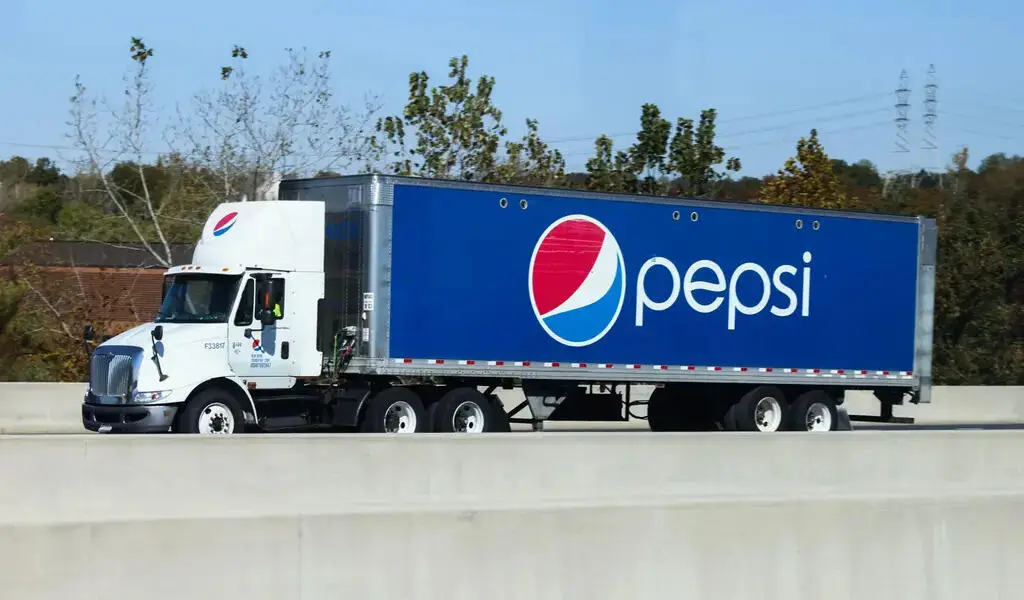Business
How To Trademark A Business Name: Protecting Your Brand’s Identity

(CTN NEWS) – As a business owner, you know the importance of a strong brand identity. Your business name is a crucial part of your brand, representing your company’s values, products, and services.
Trademarking your business name is a proactive step to protect your brand from infringement and establish your ownership rights.
In this article, we will walk you through how to trademark a business name, providing valuable insights, expert tips to help you confidently navigate the trademarking journey.
Why Trademarking Your Business Name is Essential

Your business name is more than just a combination of words; it is the cornerstone of your brand’s identity. Trademarking your business name offers several benefits that are crucial for your business’s success, including:
- Legal Protection: Registering your business name as a trademark provides you with exclusive rights to use that name for your products or services. It prevents others from using a similar name that could confuse consumers and dilute your brand’s identity.
- Brand Recognition: A trademarked business name helps establish your brand’s identity in the market, setting you apart from your competitors. It creates brand recognition and builds trust among consumers, allowing you to establish a strong brand reputation.
- Business Expansion: Trademarking your business name enables you to expand your business nationally or internationally, protecting your brand’s identity in different jurisdictions. It also adds value to your business and can be used as an asset for licensing or franchising opportunities.
- Legal Remedies: Trademark registration provides you with legal remedies and enforcement options in case of infringement. It allows you to take legal action against anyone who tries to use a similar name or imitate your brand, safeguarding your business’s reputation and financial interests.
How to Trademark a Business Name: Step-by-Step Process

Trademark registration is a legal process that involves several steps. Here is a step-by-step guide on how to trademark a business name:
Step 1: Research Your Business Name
Before you start the trademark registration process, it is essential to conduct a comprehensive search to ensure that your business name is unique and not already in use by someone else.
This research is crucial to avoid potential conflicts and rejections during the trademark application process.
Tips:
- Conduct a thorough search on the United States Patent and Trademark Office (USPTO) website to check for existing trademarks.
- Hire a trademark attorney or use online trademark search tools to conduct a more comprehensive search.
- Check for similar business names or trademarks in your industry, even if they are not identical.
Step 2: Choose a Trademark Filing Basis
Once you have confirmed that your business name is unique, you need to choose a trademark filing basis. There are two common bases for filing a trademark application:
- Use in Commerce: If you already use your business name in connection with your products or services in interstate commerce, you can file for trademark registration based on actual use.
- Intent to Use: If you have not yet used your business name in commerce but have a bona fide intention to do so in the future, you can file for trademark registration based on intent to use.
Tip:
- Consult with a trademark attorney to determine the appropriate filing basis for your business name.
Step 3: Prepare and File Your Trademark Application
Once you have chosen the filing basis, you need to prepare and file your trademark application with the USPTO.
The application requires detailed information about the business name, including the name itself, the description of the products or services associated with the name, and the basis for filing (use in commerce or intent to use).
You may also need to provide a specimen or sample of how you are using the business name in commerce, if applicable.
Tips:
- Be thorough and accurate while preparing your trademark application to avoid potential rejections or delays.
- Consider hiring a trademark attorney to ensure that your application is filed correctly and increase the chances of approval.
Step 4: Review and Respond to Trademark Office Actions
After submitting your trademark application, it will be examined by a trademark examiner at the USPTO.
If any issues or conflicts are identified, you may receive a trademark office action, which is an official communication from the USPTO.
The office action may require you to provide additional information, clarify your application, or respond to any objections raised by the examiner.
Tips:
- Carefully review the trademark office action and respond within the given timeframe to avoid abandonment of your application.
- Seek assistance from a trademark attorney in case of any legal complexities or objections raised by the examiner.
Step 5: Publication for Opposition
If your trademark application passes the examination stage, it will be published for opposition.
This means that your application will be made public for a specified period, during which other parties can oppose your trademark registration if they believe it conflicts with their existing trademarks.
If no oppositions are filed, your trademark will move toward registration.
Tips:
- Monitor the publication for opposition and be prepared to defend your trademark application if any oppositions arise.
- Seek legal advice from a trademark attorney if you receive any oppositions to protect your trademark rights effectively.
Step 6: Registration and Maintenance
If no oppositions are filed during the opposition period, or if any oppositions are successfully resolved in your favor, your trademark will be registered with the USPTO.
You will receive a certificate of registration, which serves as evidence of your exclusive rights to use the business name as a trademark for the specified products or services.
However, trademark registration is not a one-time process; it requires ongoing maintenance to keep your trademark active and enforceable.
You need to file periodic maintenance documents and renew your trademark registration to ensure continuous protection.
Tips:
- Keep track of the maintenance deadlines and requirements to ensure the continuous validity of your trademark registration.
- Consider hiring a trademark attorney to assist you with the maintenance and renewal process to avoid any lapses in your trademark protection.

Conclusion
Trademarking your business name is important in protecting your brand and establishing your exclusive rights to use the name in connection with your products or services.
It provides you with legal recourse against potential infringers and strengthens your brand identity in the market.
While the trademark registration process may seem complex, following the steps outlined in this article and seeking legal assistance from a qualified trademark attorney can greatly increase your chances of successfully trademarking your business name.
Remember to conduct a comprehensive trademark search to ensure the availability of your business name, prepare a strong trademark application, respond promptly to any communications from the USPTO, and maintain your trademark registration through regular filings and renewals.
By taking these steps, you can safeguard your business name and build a strong brand presence in the competitive business landscape.
RELATED CTN NEWS:
How To Create A Winning Facebook Marketing Campaign?
4 Ps Of Marketing: How To Apply The 4 Ps Of Marketing In Your Business?
How To Increase Blog Traffic And Boost Your Online Presence In 2023?

Business
PepsiCo Reduces Revenue Projections As North American Snacks And Key International Markets Underperform.

(VOR News) – In the third quarter of this year, Pepsi’s net income was $2.93 billion, which is equivalent to $2.13 per share. This was attributed to the company.
This is in stark contrast to net income of $3.09 billion, which is equivalent to $2.24 per share, during the same period in the previous year. The company’s earnings per share were $2.31 when expenses were excluded.
Net sales decreased by 0.6%, totaling $23.32 billion. Organic sales increased by 1.3% during the quarter when the effects of acquisitions, divestitures, and currency changes are excluded.
Pepsi’s beverage sales fell this quarter.
The most recent report indicates that the beverage and food sectors of the organization experienced a 2% decline in volume. Consumers of all income levels are demonstrating a change in their purchasing habits, as indicated by CEOs’ statements from the previous quarter.
Pepsi’s entire volume was adversely affected by the lackluster demand they encountered in North America. An increasing number of Americans are becoming more frugal, reducing the number of snacks they ingest, and reducing the number of times they purchase at convenience stores.
Furthermore, Laguarta observed that the increase in sales was partially attributed to the election that occurred in Mexico during the month of June.
The most significant decrease in volume was experienced by Quaker Foods North America, which was 13%. In December, the company announced its initial recall in response to a potential salmonella infection.
Due to the probability of an illness, the recall was extended in January. Pepsi officially closed a plant that was implicated in the recalls in June, despite the fact that manufacturing had already been halted.
Jamie Caulfield, the Chief Financial Officer of Pepsi and Laguarta, has indicated that the recalls are beginning to have a lessening effect.
Frito-Lay experienced a 1.5% decline in volume in North America. The company has been striving to improve the value it offers to consumers and the accessibility of its snack line, which includes SunChips, Cheetos, and Stacy’s pita chips, in the retail establishments where it is sold.
Despite the fact that the category as a whole has slowed down in comparison to the results of previous years, the level of activity within the division is progressively increasing.
Pepsi executives issued a statement in which they stated that “Salty and savory snacks have underperformed year-to-date after outperforming packaged food categories in previous years.”
Pepsi will spend more on Doritos and Tostitos in the fall and winter before football season.
The company is currently promoting incentive packets for Tostitos and Ruffles, which contain twenty percent more chips than the standard package.
Pepsi is expanding its product line in order to more effectively target individuals who are health-conscious. The business announced its intention to acquire Siete Foods for a total of $1.2 billion approximately one week ago. The restaurant serves Mexican-American cuisine, which is typically modified to meet the dietary needs of a diverse clientele.
The beverage segment of Pepsi in North America experienced a three percent decrease in volume. Despite the fact that the demand for energy drinks, such as Pepsi’s Rockstar, has decreased as a result of consumers visiting convenience stores, the sales of well-known brands such as Gatorade and Pepsi have seen an increase throughout the quarter.
Laguarta expressed his opinion to the analysts during the company’s conference call, asserting, “I am of the opinion that it is a component of the economic cycle that we are currently experiencing, and that it will reverse itself in the future, once consumers feel better.”
Additionally, it has been noted that the food and beverage markets of South Asia, the Middle East, Latin America, and Africa have experienced a decline in sales volume. The company cut its forecast for organic revenue for the entire year on Tuesday due to the business’s second consecutive quarter of lower-than-anticipated sales.
The company’s performance during the quarter was adversely affected by the Quaker Foods North America recalls, the decrease in demand in the United States, and the interruptions that occurred in specific international markets, as per the statements made by Chief Executive Officer Ramon Laguarta.
Pepsi has revised its forecast for organic sales in 2024, shifting from a 4% growth rate to a low single-digit growth rate. The company reiterated its expectation that the core constant currency profitability per share will increase by a minimum of 8% in comparison to the previous year.
The company’s shares declined by less than one percent during premarket trading. The following discrepancies between the company’s report and the projections of Wall Street were identified by LSEG in a survey of analysts:
SOURCE: CNBC
SEE ALSO:
Old National Bank And Infosys Broaden Their Strategic Partnership.
Business
Old National Bank And Infosys Broaden Their Strategic Partnership.

(VOR News) – Old National Bank, a commercial bank with its headquarters in the Midwest, and Infosys, a firm that specializes in information technology, have recently entered into a strategic expansion of their link, which has been in place for the past four years.
This expansion is more likely to take place sooner rather than later, with the likelihood being higher.
For the purpose of making it possible for Old National Bank to make use of the services, solutions, and platforms that are offered by Infosys, the objective of this expansion is to make it possible for the bank to transform its operations and processes through the application of automation and GenAI, as well as to change significant business areas.
This lets the bank leverage Infosys’ services, solutions, and platforms.
Old National Bank Chairman and CEO Jim Ryan said, “At Old National, we are committed to creating exceptional experiences for both our customers and our fellow employees.”
This statement is applicable to Old National Bank. Infosys is carefully managing the business process innovations that it is putting us through, putting a strong emphasis on efficiency and value growth throughout the process to ensure that it is carried out efficiently.
This is a routine occurrence throughout the entire operation. Because of Infosys’ dedication to our development and success, we are incredibly appreciative of the assistance they have provided.
Old National has been receiving assistance from Infosys in the process of updating its digital environment since the year 2020, according to the aforementioned company.
Ever since that time, the company has been providing assistance. The provision of this assistance has been accomplished through the utilization of a model that is not only powerful but also capable of functioning on its own power.
Infosys currently ranks Old National thirty-first out of the top thirty US banks.
This ranking is based on the fact that Old National is the nation’s largest banking corporation.
It is estimated that the total value of the company’s assets is approximately fifty-three billion dollars, while the assets that are currently being managed by the organization are valued at thirty billion dollars.
Dennis Gada, the Executive Vice President and Global Head of Banking and Financial Services, stated that “Old National Bank and Infosys possess a robust cultural and strategic alignment in the development, management, and enhancement of enterprise-scale solutions to transform the bank’s operations and facilitate growth.”
This remark referenced the exceptional cultural and strategic synergy between the two organizations. Dennis Gada is the one who asserted this claim. This was articulated explicitly concerning the exceptional cultural congruence and strategy alignment of the two organizations.
We are pleased to announce that the implementation of Infosys Topaz will substantially expedite the transformation of Old National Bank’s business processes and customer service protocols. We are exceedingly enthusiastic about this matter. We are quite thrilled about this specific component of the scenario.
Medium-sized banks operating regionally will continue to benefit from our substantial expertise in the sector, technology, and operations. This specific market segment of Infosys will persist in benefiting from our extensive experience. This phenomenon will enable this market sector to sustain substantial growth and efficiency benefits.
SOURCE: THBL
SEE ALSO:
American Water, The Largest Water Utility In US, Is Targeted By A Cyberattack
States Sue TikTok, Claiming Its Platform Is Addictive And Harms The Mental Health Of Children
Qantas Airways Apologizes After R-Rated Film Reportedly Airs On Every Screen During Flight
Business
American Water, The Largest Water Utility In US, Is Targeted By A Cyberattack

The largest regulated water and wastewater utility company in the United States stated Monday that it had been the target of a cyberattack, forcing the company to halt invoicing to consumers.
American Water, The Largest Water Utility In US, Is Targeted By A Cyberattack
American Water, based in New Jersey and serving over 14 million people in 14 states and 18 military facilities, said it learned of the unauthorized activity on Thursday and quickly took precautions, including shutting down certain systems. The business does not believe the attack had an impact on its facilities or operations and said employees were working “around the clock” to determine the origin and scale of the attack.

According to their website, American Water operates over 500 water and wastewater systems in around 1,700 communities across California, Georgia, Hawaii, Illinois, Indiana, Iowa, Kentucky, Maryland, Missouri, New Jersey, Pennsylvania, Tennessee, Virginia, and West Virginia.
SOURCE | AP
-

 News3 years ago
News3 years agoLet’s Know About Ultra High Net Worth Individual
-
Entertainment2 years ago
Mabelle Prior: The Voice of Hope, Resilience, and Diversity Inspiring Generations
-

 Health4 years ago
Health4 years agoHow Much Ivermectin Should You Take?
-

 Tech2 years ago
Tech2 years agoTop Forex Brokers of 2023: Reviews and Analysis for Successful Trading
-

 Lifestyles3 years ago
Lifestyles3 years agoAries Soulmate Signs
-

 Movies2 years ago
Movies2 years agoWhat Should I Do If Disney Plus Keeps Logging Me Out of TV?
-

 Health3 years ago
Health3 years agoCan I Buy Ivermectin Without A Prescription in the USA?
-

 Learning3 years ago
Learning3 years agoVirtual Numbers: What Are They For?